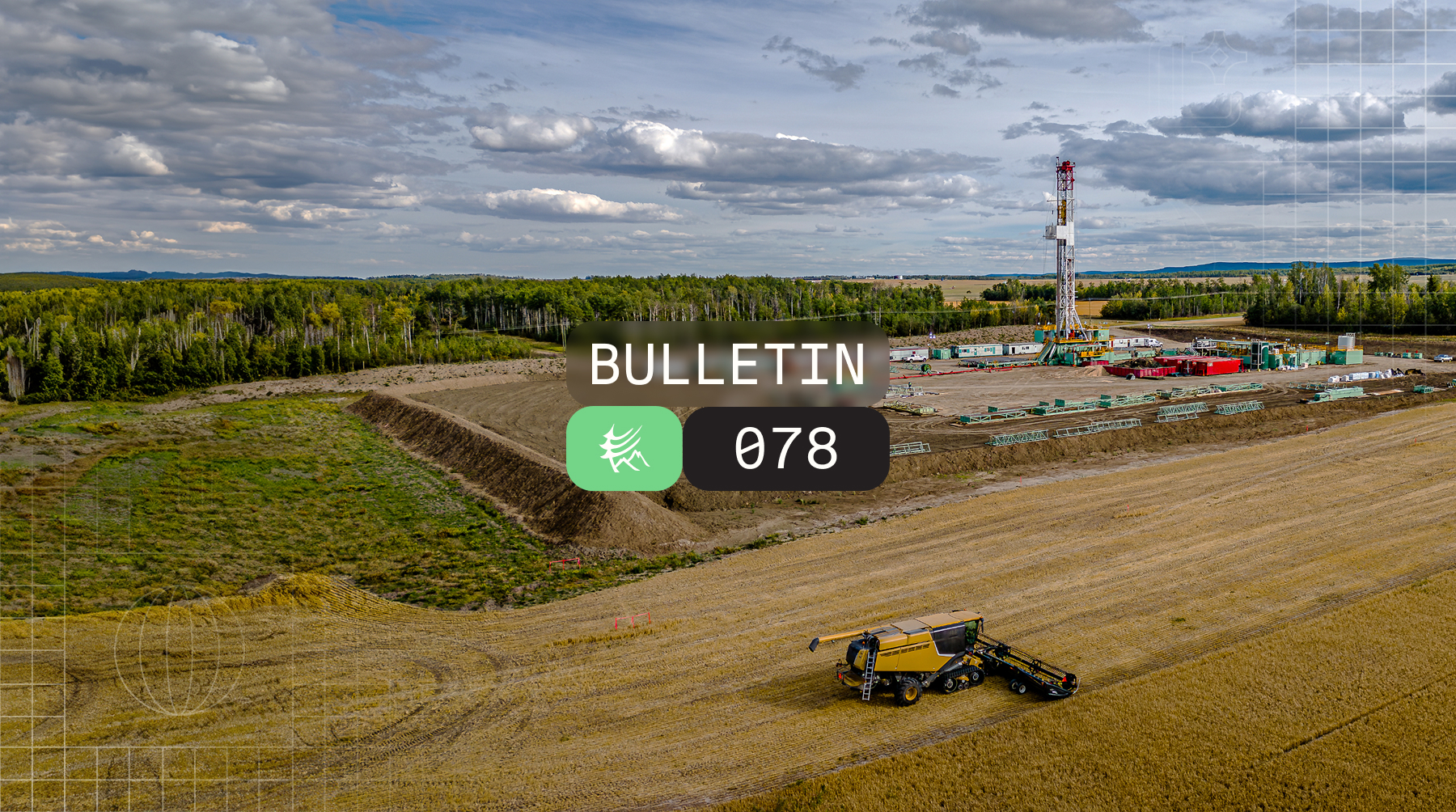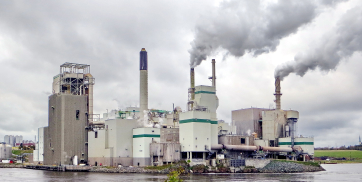Overview
In this blog post, we provide a summary of the proposed (draft) Gas Pipeline Leak Detection and Repair NPRM released by PHMSA in May 2023. Our summary focuses on methane detection technology requirements for transmission pipelines inspections.
The document used to prepare the content of this report can be found here. Note that much of the text below is verbatim from the proposed rule. This blog post is a summary of the most important elements relating to use of methane detection and quantification technology.
The following are the key takeaways from proposed regulatory amendments:
- PHMSA is proposing more frequent leakage surveys for regulated facilities and the minimum requirement for regulated facilities is annual inspections.
- Except for non-HCA class 1 and class 2, all regulated facilities (onshore transmission and gathering) must be inspected with leak detection instruments.
- PHMSA Gas Pipeline Leak Detection rule requires instrument-based leak detection with 5 ppm sensitivity when measuring 5 feet from pipeline. No specific technology is required if it has adequate sensitivity.
- Rule offers a pathway for alterative technologies that are less sensitive, but equivalence pathway is unclear.
- Written ALDP (Advanced Leak Detection Program) and an annual program evaluation and improvement report will be required.
- Timeline for compliance will be 6 months after the rule is finalized.
Summary of Major Regulatory Provisions
(I.B) – page 9
The NPRM is proposing the following changes:
- Strengthen leak survey and patrolling requirements for all 192-regulated gas pipelines.
- Introduce Advanced Leak Detection Program (ALDP) for all 192-regulated gas pipelines.
- PHMSA proposes to introduce an ALDP performance standard that would require operators of part 192-regulated gas pipelines to demonstrate, by conducting engineering tests and analyses, that their suite of leak detection equipment, procedures, and analytics can detect all leaks above a minimum concentration threshold when measured near the pipeline. PHMSA proposes to require that leakage surveys be performed using commercially available advanced technology and practices consistent with the proposed ALDP performance standard. PHMSA also proposes to require a minimum sensitivity for leak detection equipment used in leakage surveys and leak investigations.
- Amend 192.703 to require repair of ALL leaks
- Establish for all part 192-regulated gas pipelines minimum criteria for leak grades and associated repair schedules prioritized by safety and environmental hazard at a new § 192.760
- Require reductions in intentional sources of methane emissions by minimizing releases associated with blowdowns and other vented emissions from gas transmission, offshore gas gathering, and Type A gas gathering pipelines (at § 192.770) and LNG facilities (at § 193.2523)
- Require operators of certain part 192-regulated gas pipelines to reduce emissions associated with the design, configuration, and maintenance of pressure relief devices (§§ 192.199 and 192.773)
- Codify in Federal regulations a congressional requirement for operators of gas pipeline facilities to implement written procedures to eliminate hazardous leaks, minimize releases of natural gas, and remediate or replace pipelines known to leak
- Expand reporting requirements (at §§ 191.3 and 191.19) and recordkeeping requirements (at §§ 192.760 and 192.773) to provide higher-quality information on unintentional and intentional gas releases from gas pipeline facilities
- Require that Types A, B, and C gathering pipeline operators submit geospatial pipeline location data to the National Pipeline Mapping System (NPMS) pursuant to § 191.29
- Incorporate explicit reference to environmental harm among the “hazards” addressed in certain parts 191 and 192 requirements
- Introduce, for certain components and equipment within part 193-regulated LNG facilities, at a new § 193.2624, requirements for periodic methane leakage surveys using leak detection equipment and repair of identified leaks pursuant to operators’ written maintenance or abnormal operations procedures
Proposed Compliance Timelines
PHMSA proposes an effective date for this rulemaking of 6 months following publication of a final rule in the Federal Register.
- Once finalized, the rule will offer a 6-month phase-in period for compliance. That would mean the first inspections would need to be completed by late 2024 (assuming 12-month rulemaking timeline).
Summary of Relevant Sections
from IV. Summary of Proposals
Leakage Survey and Patrol Frequencies and Methodologies
(IV.A) – PAGE 132
- Rule proposed to strengthen minimum leakage survey frequencies and wants to introduce patrolling requirements for Type B and Type C gathering pipelines. Additionally, it proposed to increase the minimum patrolling frequency for all gas transmission, offshore gathering, and Type A regulated onshore gas gathering pipelines.
- PHMSA proposed to limit the exclusive use of human senses for leakage surveys to submerged offshore gas transmission and submerged offshore gas gathering pipelines and, subject to notification to and review by PHMSA, onshore gas transmission and regulated onshore gas gathering pipelines in Class 1 and Class 2 locations outside of HCAs.
- PHMSA has not included minimum leakage survey frequencies or leak detection equipment requirements for UNGSFs (Underground natural gas storage facilities)
§ 192.9, 192.705, and 192.706 – PAGE 147-153
- PHMSA proposed intensifying frequency and including the requirement of leak detection equipment and practices meeting an ALDP standard. Table 1 summarizes the main changes applicable to transmissions and gathering.
- PHMSA will not require leak detection equipment for leakage surveys of submerged offshore pipelines, including platform risers up to the waterline.
- All leaks detected will need to be graded and repaired consistent with the requirements proposed.
Table 1. Summary of Transmission and Regulated Gathering Leakage Survey Amendments (Page 150)
| Facility | Existing | Proposed |
| Non-odorized Class 3 | Twice a year not to exceed 7 ½ months. | No change |
| Non-odorized Class 4 | Four times a year not to exceed 4 ½ months. | No change |
| All other transmission | Once a year not to exceed 15 months | No change |
| HCA class 1, 2, or 3 | No specific standard | Twice a year not to exceed 7 ½ months. |
| HCA class 4 | No specific standard | Four times a year not to exceed 4 ½ months. |
| Valves, flanges, pipeline tieins with valves and flanges, ILI launcher and ILI receiver facilities, and leak prone pipe | No specific standard | Same as proposed HCA frequencies. |
| Leak detection equipment | Only required for non-odorized class 3 and class 4 | Required except for non-HCA class 1 and class 2 with a notification. (See note 3) |
| Regulated gathering | Existing transmission line requirements apply to offshore, Type A, Type B, and certain Type C gathering lines. | Require proposed leakage survey requirements for all
regulated gathering lines |
Note 1: The most frequent survey would apply.
Note 2: The requirements for “gas” pipelines apply equally to pipelines transporting other gases, including hydrogen gas pipelines.
Note 3: Visual surveys and other survey methods depending exclusively on human or animal senses would only be authorized for non-HCA class 1 and class 2 if the operator can demonstrate through tests and analyses included in the notification that the survey method would be effective to meet the ALDP performance standard. For example, a visual vegetation survey would need to include procedures to ensure effective detection, such as ensuring the location of a buried pipeline is determined. It also would be required to be performing vegetation surveys on foot rather than at a distance from a vehicle or aircraft. Additionally visual surveys would not be approved in areas where vegetation is absent.
Advanced Leak Detection Programs (ALDP)
(IV.B) – 192.763 – PAGE 161
Overview
- Operators will be required to establish:
- Written ALDPs
- Performance standards for both: sensitivity of technologies and effectiveness of ALDPs.
- An ALDP is a complementary set of mutually reinforcing technologies and procedures, including analytics. An ALDP must include 4 elements:
- PHMSA want to create flexibility as long as there is detection, analytics, and practices. Therefore, they are not requiring specific technologies for ALDPs.
- May review/approve “alternative performance standard”
Technology Standards
192.763(a)(1) – PAGE 163-169
- Operator will need to use leak detection equipment on transmission lines.
- Minimum sensitivity required is 5ppm or less when measured 5 feet from the pipeline. A reading of 1% of the lower-explosive limit is ~500 ppm, so this would provide a protective threshold of detection sensitivity.
- Apart from minimum sensitivity requirements described above, PHMSA does not propose to require the use of any particular leak detection equipment or technology.
- PHMSA acknowledges the fast-evolving state-of-the-art in leak detection technologies for methane and other gases and seeks comments on whether and in what manner it could integrate within a final rule requirement for technologies that may not have specified sensitivities. This includes continuous pressure wave monitoring, fiber optic sensing, OGI, and LIDAR based detection technologies. Additional safety and environmental benefits / potential costs of a particular approach (including whether that approach would be technically feasible, cost-effective, and practicable) will also be considered. PHMSA expects those technologies would fit on “alternative under “Alternative Advanced Leak Detection” or as supplement to other equipment satisfying the minimum sensitivity performance requirements proposed.
- PHMSA expects that periodic evaluation and improvement element of each ALDP/ ALDP performance requirement will encourage operators to continually evaluate and incorporate new technologies as appropriate for their systems over time. This flexible approach would ensure that operators’ leakage detection equipment keeps pace with the state-of-the-art in leak detection technology.
- PHMSA also proposes to include in the ALDPs an analysis, at a minimum, showing the appropriateness of the following advanced leak detection technologies and methods: leakage surveys with optical, infrared, or laser-based hand-held devices; continuous monitoring via stationary gas sensors, pressure monitoring, or other means; mobile surveys from vehicle, satellite, or aerial platforms; and systemic use of other technologies capable of detecting and locating leaks consistent with the proposed ALDP performance standard at § 192.763.
- Stationary gas detection systems are already required on compressor stations under PHMSA’s existing regulations, and now PHMSA is inviting comments on the value of introducing requirements for continuous monitoring systems, via stationary gas detection systems, pressure monitoring, or other means (including requirements for the use of specific methods or technologies), on other types of pipeline facilities (including whether continuous monitoring would be most appropriate at any particular facilities or locations, or in other particular conditions).
192.763(a)(2) – PAGE 170-172
- The ALDP will include procedures for performing leakage surveys to ensure that operators use procedures appropriate for environmental conditions such as temperature, wind, time of day, precipitation, and humidity. Operator also must define under which conditions the procedure may and may not be used. Procedures must be consistent with equipment manufacturer guidelines. According with the rule establishing and following procedures with parameters appropriate for the leak detection technologies and practices is critical for reliably detecting leaks, especially in challenging conditions.
- For onshore pipelines and offshore pipeline facilities above the waterline, PHMSA proposed to require that pinpointing location be performed using handheld leak detection equipment with a minimum sensitivity of 5 ppm (in case of screening programs that need follow-up).
- The effectiveness of leak detection equipment will need to be validated by testing the equipment measurements against a known concentration of gas. Operators would have to maintain records that their leak detection equipment has been validated for five years after the date each device ceases to be used in the operator’s ALDP.
- Maintenance and calibration of leak detection equipment will also be required.
Leakage Survey Frequency
192.763(a)(3) – PAGE 172-173
- Leak survey frequency proposed is outlined in Table 1.
- Alternative Advanced Leak Detection devices less sensitive than 5 ppm may be approved but may require more frequent surveys to provide an equivalent degree emissions reduction. If more frequent leakage surveys are necessary to reliably meet the ALDP programmatic performance standard that must be noted in the operator’s ALDP.
- Leak history can also be used as justification for increased frequency.
- PHMSA is looking for comments on the value of requiring continuous monitoring systems on facilities which are historically prone to leak.
Program Evaluation and Improvement
192.763(a)(4) – PAGE 173-174
- At least annually, operators would have to re-evaluate their ALDPs. For example, if an operator finds evidence that their ALDP fails to detect leaks during leakage surveys, or that it is finding grade 1 or 2 leaks but does not find any grade 3 leaks, changes to program elements may be necessary to ensure that the minimum performance standard.
Advanced Leak Detection Performance Standard
192.763(b) – PAGE 173-176
- ALDP must be capable of detecting all leaks that produce a reading of 5 ppm or greater of gas when measured from a distance of 5 feet from the pipeline, or within a wall-to-wall paved area.
- One example of ALDP that fits requirement is a walking survey conducted alongside a pipeline with thorough, careful, procedures to ensure detection of all leaks could achieve this standard with an FID or other handheld device with the 5-ppm sensitivity.
- Mobile leak detection systems and aerial systems that use gas samplers or other sensors to detect leaks at a greater distance may allow for more efficient leakage surveying but could require more sensitive (sensors in the ppb range) leak detection equipment coupled with advanced analytics (followed by the use of handheld leak detection equipment to pinpoint leak location) to detect and locate the same leak.
- PHMSA was informed that leak flow rate would be a more appropriate metric for leak detection and ALDP program performance than PHMSA’s proposed volumetric sensitivity metric. However, most currently available methane leak detection technologies are focused on calculating the concentration of gas in the air rather than leak flow rate (note: Highwood questions the validity of this claim). Moreover, PHMSA’s choice of leak concentration-based performance standard for leak detection equipment was informed by the goal of (as much as possible) identifying a single performance standard that would be well-suited for leak detection on both aboveground and buried natural gas pipelines. Additionally, a concentration-based metric is especially useful for addressing explosion risks to public safety (regardless of a leak’s flow rate).
- Operators may incorporate leak flow rate metrics within their ALDPs to supplement leak concentration metrics used in PHMSA’s proposed leak detection and ALDP performance standard. Leak rate measurements may help operators quickly grade certain leaks as grade 2 leaks based on a leak rate more than 10 CFH.
- PHMSA invites comment on whether and how an alternative ALDP performance standard—such as a more demanding volumetric standard, or a flowrate-based standard—should be adopted in the final rule.
Alternative Advanced Leak Detection Performance Standard
192.763(c) – PAGE 176-177
- Operator must demonstrate that the alternative performance standard is consistent with pipeline safety and equivalent to the performance standard in § 192.763(b) with respect to reducing greenhouse gas emissions and other environmental hazards. It is unclear how this demonstration would occur.
- Flexibility can promote emerging technologies where they may be most effective. For example, some aerial survey methods may not yet be able to detect small but potentially hazardous, below-ground methane leaks from a distribution pipeline system, but they could be an efficient leakage survey method for leaks on below-ground onshore gas transmission lines, which leaks are larger on average due to the higher operating pressure.
- Proposal must include information about—among other things—the location and material properties of the pipeline facility, the gas being transported, a description of the proposed alternative performance standard, and a description of the ALDP equipment and procedures that would be used.
Leak Grading and Repair
§ 192.703, 192.760, and 192.769 – PAGE 177
- PHMSA proposes operators to ensure properly trained personnel to grade and repair all leaks based on the severity of public safety and environmental risk. Leaks will require to be graded as grade 1, grade 2, or grade 3 based on the magnitude and probability of risks posed by that leak to the public and the environment. Repair will be prioritized from most serious hazards to people or the environment.
- Grading will be based on GPTC Guide’s familiar framework for classifying all leaks.
- While any leak of methane from a gas pipeline system necessarily entails environmental harm proportional to the amount of methane released to the atmosphere, PHMSA proposes introducing minimum sensitivity standards for leak detection equipment in recognition that some leaks are so small that the harm they present does not warrant expending the resources necessary to detect and repair them, particularly where the leak is approaching the limits of detection with commercially available advanced technologies.
- Grade 1 is the highest priority and 3 the lowest priority. Framework for classification is described in the main rule. (Page 182 to 199)
- As soon as an operator determines a grade 1 leak exists, it must immediately dispatch personnel to address hazards to people or the environment and undertake other actions to minimize risks to public safety and the environment.
- Multiple criteria are used to grade leaks, but any leak with an emissions rate equal to or greater than 10 CFH would be classified as a grade 2 leak. Threshold was based on past study that showed that 10 CFH represented only 2% of all leaks by number but over half of all emission volumes. Grade 2 leaks must be repairs must be completed within the earlier of six months of detection, or the repair timeline specified in the operator’s procedures or IM plan. Operators subject to the six-month default repair timeline for grade 2 leaks would be required to re-evaluate each grade 2 leak every 30 days until the leak has been repaired, which is intended to ensure that those leaks do not degrade into a grade 1 leak.
- Rule proposed 24-month repair deadline for grade 3 leaks. This repair timeline would ensure timely repair of leaks while facilitating operator prioritization of repairs of higher-risk grade 1 and 2 leaks.
Disclaimer: This blog post was created by Highwood Emissions Management Inc (Highwood). Except where expressly stated, Highwood cannot guarantee the validity, accuracy, or comprehensiveness of any information presented in this blog post. Information presented may be used to guide decision making but additional information or research may be required. While every effort is made by Highwood to ensure that accurate information is disseminated through this blog post, Highwood makes no representation of the content and suitability of this information for any purpose. If you discover any errors, omissions, or inaccuracies in this blog post or have any suggestions to improve it, please let us know by contacting us at info@highwoodemissions.com.






